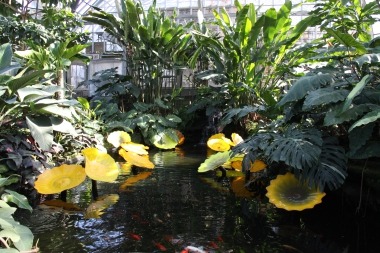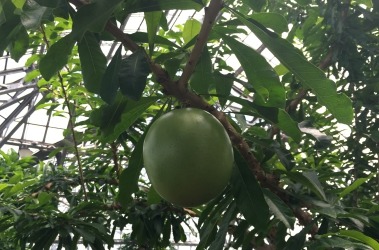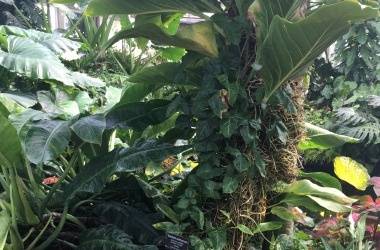Houseplants gone wild! Indoor gardeners are sure to find something familiar here, as many aroids are popular houseplants.
Aroid refers to a certain type of flower structure made up of a modified leaf (spathe) and a stalk of tiny flowers (spadix). The reason why many aroids find their way into our homes and indoor spaces is because they are particularly tolerant of low light. You can see evidence of their adaptation to low light by looking at their leaves. Large, often arrow-shaped leaves capture additional sunlight. You may also find that the undersides of an aroid plant’s leaves are darker than the tops, indicating that the dark underside reflects light back up to the top portion of other leaves. Many of the low-growing plants in this room are the ones that, in the wild, would be found growing on the floor of a rainforest- a place that receives very little sunlight.





